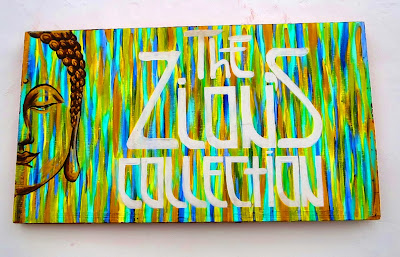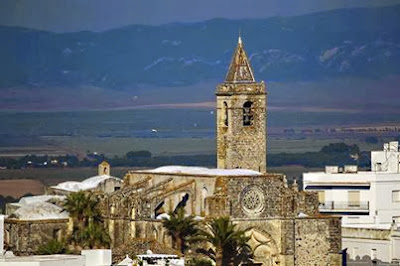José Ortiz at the Kiosko Ortiz on San Franciso. The kiosk is sometimes called La manquita (the sleeve) after his grandfather who first ran it. José's son, also José, is the present mayor of Vejer.

Although many of the intriguing little shops we find in the summer months are closed during the winter, there's still scope for retail therapy during the winter. The shops in the area of Juan Relinque and the Plazuela, with a few around the Plaza de España offer plenty of opportunities for browsing and treating yourself as well as supplying your everyday needs.
Up in the new part of town, nothing is seasonal and life goes on as normal through the winter. Look out for the Chinese and Moroccan bazaars where you can often find low-priced local
ceramics and everything you need at a bargain price. Meat, fish, fruit and vegetables are available from numerous small shops which offer helpful personal service.
Most shops close at 2 pm and reopen again around 5 until 8, though there may be some slight variations. The main exception to this rule is the supermarkets, Supersol (on the corner of Avenida Buenavista and Avenida de Andalucía) Superarcos (Avenida Buenavista 30a) and Dia (Conil 5), which are open from 9 a.m. to 9.30 p.m. Monday to Saturday. The following shops are open at the usual times unless otherwise stated.
Equus (Juan Relinque 44) sells a wide range of equestrian products and also arranges riding lessons and excursions.
 |
| Paco Melero's butcher shop |
 |
Interior, Paco Melero's
Paco Melero's famous butcher's shop on the corner with Calle San Ambrosio, supplies hotels and restaurants and is known far and wide for the quality of their products. |

Musaranas (Juan Relinque 49) sells men's women's and children's clothes and shoes.
The Zious Collection sells second hand and vintage clothes.
The English Bookshop (Juan Relinque 45) sells secondhand books in English and German. (Open 8th February.)
Electro-Firma (Juan Relinque 37) sells everything! (Especially good for plants. And hats.)
Tejidos Oliva (Juan Relinque 28) sells fabrics, fascinators, bags and shoes.
. |
|
Merceria Sandra (Juan Relinque 29) sells everything you need for sewing or knitting.
Adara (Juan Relinque 26) sells clever and stylish clothes and jewellery.
The pharmacy (16 Juan Relinque)
sells medicines and beauty products.
Carmen at Lula sells clothes and all kinds of nice things!
Clothes for all occasions from Duende (Juan Relinque 19)
Cosmetics, groceries and cleaning materials from Calle Alta (Corner of Altozano)
María Ángeles in the Panaderia (bakery) (Juan Relinque 6 next to Escudero.)
Groceries: Alimentación Paco Mera (Juan Relinque 6)
In and around La Plazuela
In this unnamed but vital shop you can use the Internet, make phone calls, buy snacks and get bus tickets.
Susana sells gifts, local products and electrical ítems at the Bazaar Plazuela
Buy newspapers, magazines and stationery at La Plazuela
Buy cakes at the Pasteleria Galvan (Plazuela Juan Bueno 1). There's also so an excellent cafe here with great views.

Buy stamps, gifts and smoking requirements here (Juan Bueno 3)

Get lovely things forthe house at Frambuesa
(Altozano 5)

Wines and Sprits at Vino y Mar
Speciality bread and other food at Ajonjoli (Nuestra señora de la Oliva 29).
Buy jewellery from Joyeria María Oliva (Nuestra Señora de la Oliva 19).
Perfume, knitting wool at the corner of Juan Bueno and the Plazuela
Campo y Hogar sells everything! (Los Remedios 51-59, end of the park)
Near the Plaza de España
The magical 'Taller de Badillo' (Badillo 4) sells paper sculpture at it's most inventive, as well as pictures, notebooks and paper jewellery. It's almost impossible to leave empty-handed, and it's also possible to take courses in paper sculpture.
|












































+-+Copy.JPG)


.JPG)






